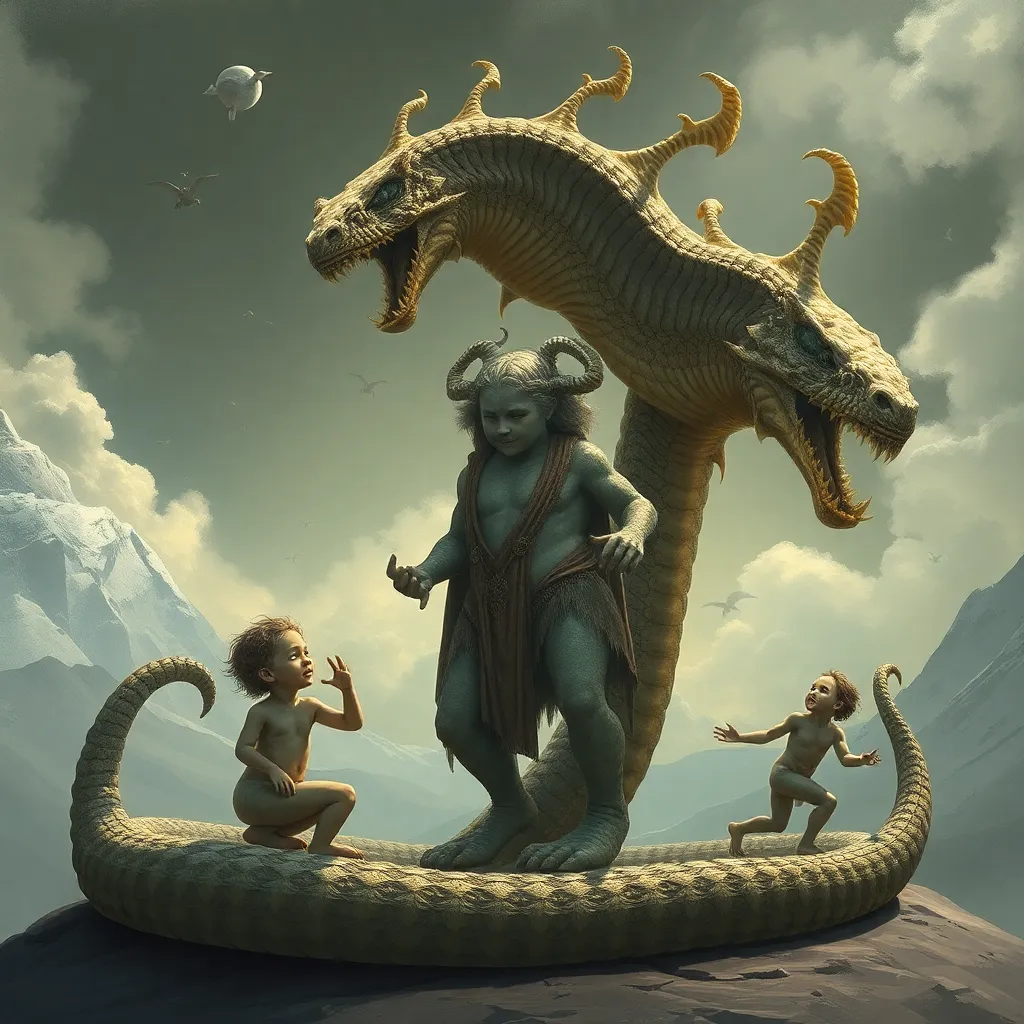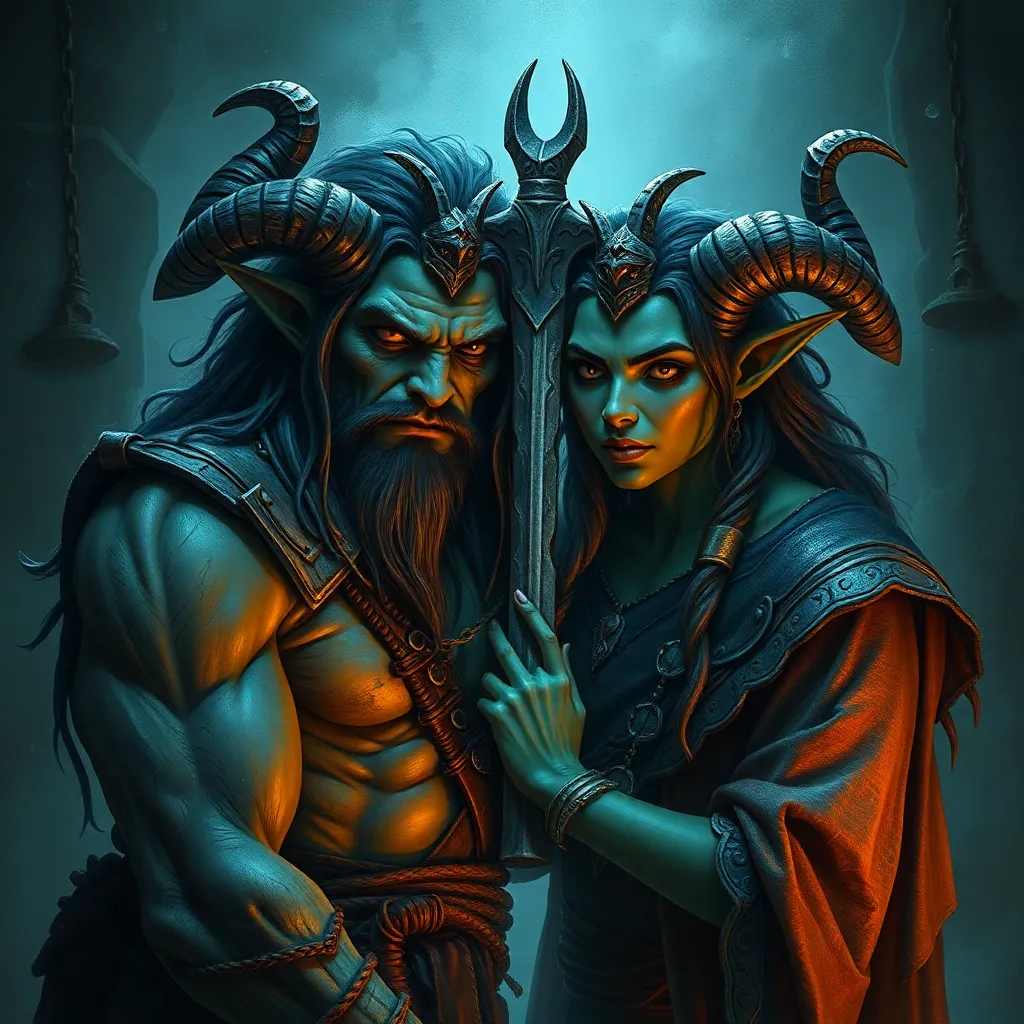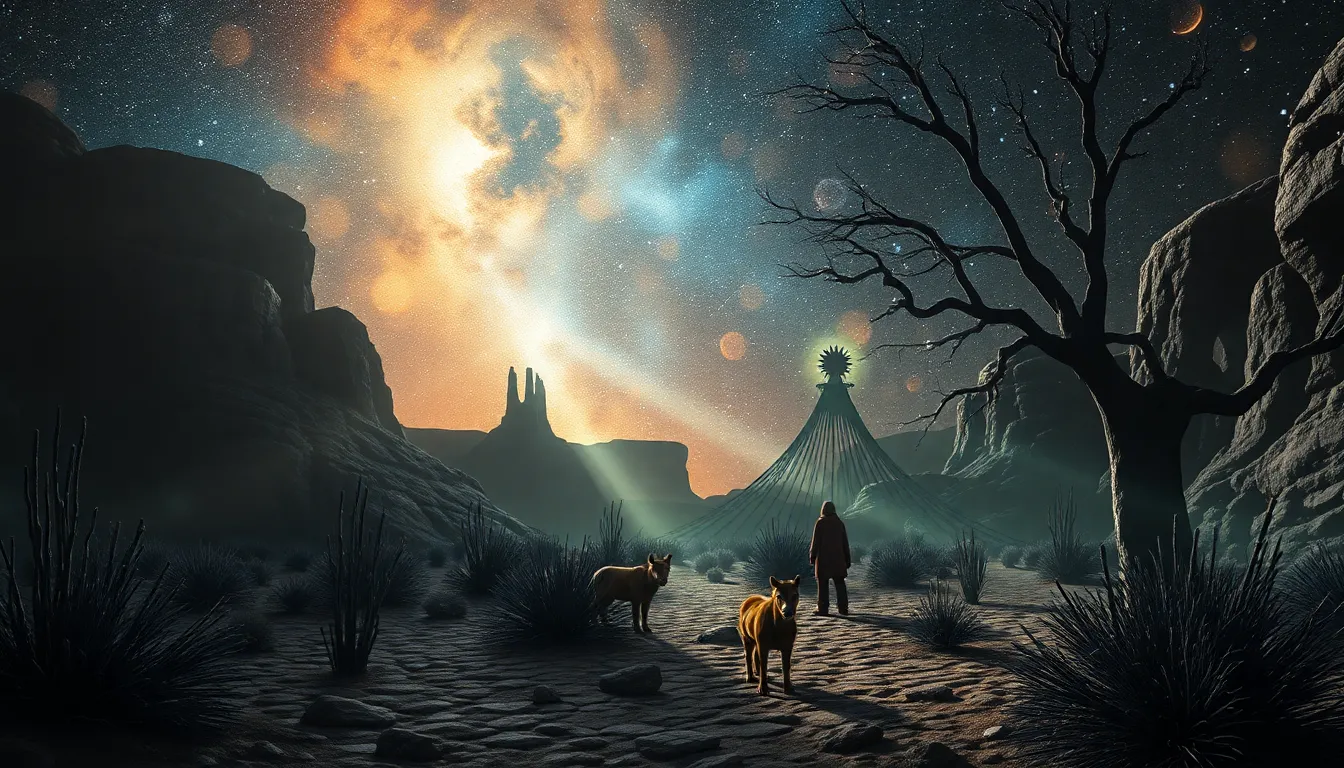Echidna’s Children: A Guide to the Monstrous Offspring of the Serpent-Woman in Greek Mythology
I. Introduction
Echidna, known as the “Mother of Monsters,” holds a significant place in Greek mythology as a fearsome figure associated with chaos and destruction. Her offspring, a host of monstrous beings, play crucial roles in the narratives of heroes and gods alike. This article aims to explore the lineage of Echidna, detailing the monstrous progeny that have captured the imagination of many throughout the ages.
II. Who is Echidna?
A. Origins and lineage
Echidna is often depicted as a half-woman, half-snake creature, embodying the duality of beauty and horror. She is said to be the daughter of Gaia, the Earth goddess, and Tartarus, the abyss, which situates her within a primordial context of chaos and creation. As a consort of Typhon, the monstrous storm giant, Echidna’s lineage is steeped in the tumultuous forces of nature.
B. Description and symbolism of Echidna
Echidna is typically represented as a beautiful woman with the lower body of a serpent. This imagery symbolizes the connection between femininity and ferocity, reflecting the dual nature of motherhood as both nurturing and destructive. Her character is often associated with the wild and untamed aspects of nature, embodying the chaotic forces that challenge order.
C. Her role in the pantheon of Greek mythology
Echidna’s role extends beyond that of a mere monster. As a mother figure, she represents the primal instincts of creation and destruction, serving as a counterpoint to more traditional maternal figures like Hera and Demeter. Her significance lies in her ability to challenge heroes, forcing them to confront their fears and insecurities.
III. The Concept of Monstrous Offspring in Mythology
A. Definition of monstrosity in ancient Greek context
In ancient Greece, monstrosity was often defined by deviation from the norm. Monsters were not merely physical aberrations; they symbolized societal fears, moral lessons, and the chaos that lurked beyond civilization. Echidna’s children exemplify these themes, representing various aspects of human experience.
B. The cultural significance of monsters in Greek stories
Monsters in Greek mythology served to embody the unknown and the dangers that lay beyond the known world. They acted as obstacles for heroes, guiding their journeys and providing moral challenges. Through their encounters with these creatures, heroes often experienced growth and transformation.
C. The relationship between mothers and their monstrous children
The bond between Echidna and her offspring is complex. While she is a nurturing figure, she also unleashes chaos through her children. This duality speaks to the broader themes of motherhood in mythology, where nurturing can coexist with destruction. Echidna’s monsters challenge societal norms and force characters to confront their own limitations.
IV. The Notable Offspring of Echidna
A. Overview of Echidna’s children
Echidna’s progeny include some of the most famous monsters in Greek mythology. Each creature possesses unique characteristics and challenges, playing pivotal roles in the myths surrounding heroes such as Heracles and Odysseus.
B. Detailed profiles of key offspring:
1. Cerberus
Cerberus, the three-headed dog, guards the entrance to the Underworld. He symbolizes the boundary between life and death, ensuring that the dead do not escape. His fierce loyalty and terrifying appearance represent the fear of the unknown after death.
2. Hydra
The Hydra, a serpent-like creature with multiple heads, regenerates two heads for every one that is cut off. This represents the theme of resilience and the idea that some challenges cannot be overcome by brute force alone. Heracles famously faced the Hydra as one of his Twelve Labors.
3. Chimera
The Chimera is a fire-breathing creature that combines features of a lion, goat, and serpent. She embodies the chaos of nature and the danger of hybridization, serving as a metaphor for the unpredictability of life. Bellerophon famously defeated her, showcasing the triumph of order over chaos.
4. Sphinx
The Sphinx, known for her riddles, challenges those who wish to pass. She symbolizes the enigma of knowledge and the importance of wisdom. Oedipus’s encounter with her highlights the consequences of human hubris.
5. Nemean Lion
The Nemean Lion, with its impenetrable hide, represents insurmountable challenges. Heracles’ battle with the lion emphasizes the need for strategy and cunning in overcoming obstacles, rather than sheer strength alone.
V. The Symbolism of Echidna’s Monsters
A. Interpretation of each creature’s symbolism
Echidna’s offspring are not only embodiments of fear but also represent deeper philosophical and psychological themes:
- Cerberus: The inevitability of death and the protection of sacred boundaries.
- Hydra: The complexity of challenges that require more than just brute strength to overcome.
- Chimera: The unpredictable nature of life and the dangers of mixing different elements.
- Sphinx: The pursuit of knowledge and the consequences of ignorance.
- Nemean Lion: The idea that some challenges require intelligence and creativity to conquer.
B. The monsters as representations of chaos and challenges
The monsters serve as metaphors for the chaos inherent in life. Each creature represents a different aspect of the human experience, from the fear of death to the struggle for knowledge. They challenge heroes to confront their inner demons and societal fears.
C. The role of Echidna’s children in heroic narratives
Echidna’s children often serve as the primary antagonists in hero narratives. Their defeat is not just a physical victory but a symbolic triumph over chaos, fear, and the unknown. These encounters highlight the growth and transformation of heroes, who emerge stronger and wiser after facing such formidable opponents.
VI. Echidna in Relation to Other Mythological Figures
A. Comparison with other mother figures in mythology (e.g., Gaia, Leto)
Echidna’s role as a mother contrasts sharply with figures like Gaia, who is often more nurturing, or Leto, who gives birth to the twin gods Apollo and Artemis. While these figures represent fertility and protection, Echidna embodies the darker aspects of motherhood, where nurturing coexists with monstrosity.
B. The dynamics between Echidna and her mate, Typhon
The relationship between Echidna and Typhon is one of mutual chaos and destruction. Together, they create a lineage of monsters that challenge the Olympian gods, symbolizing the constant struggle between order and chaos in the universe.
C. The influence of Echidna’s offspring on Greek heroes and demigods
The offspring of Echidna serve as pivotal challenges for many heroes and demigods, including Heracles, Perseus, and Oedipus. Their encounters with these monsters often lead to significant character developments and the establishment of their heroic identities.
VII. Legacy of Echidna and Her Offspring
A. The impact of Echidna’s monsters on later literature and art
Echidna’s children have left a lasting imprint on literature and art throughout the centuries. From ancient pottery depicting heroic battles to modern adaptations in films and literature, these creatures continue to inspire artists and storytellers.
B. Modern interpretations and adaptations of Echidna’s children
In contemporary culture, Echidna and her offspring have been reinterpreted in various forms, including graphic novels, movies, and video games. These adaptations often explore themes of empowerment, chaos, and the complexity of motherhood.</



